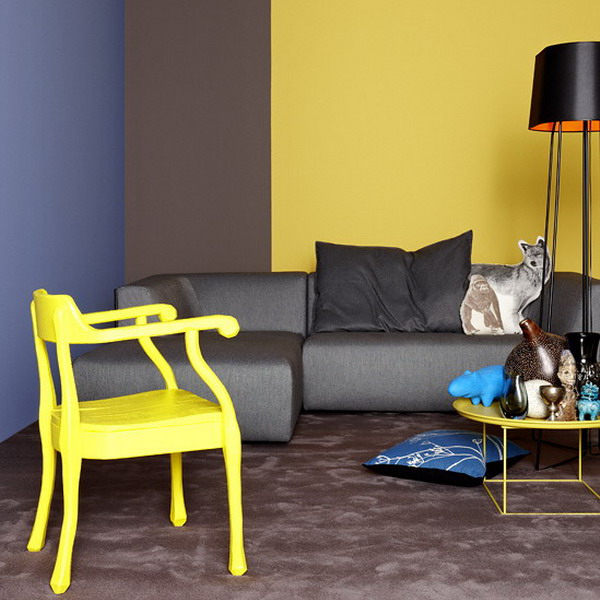Whether your home is minimalist or filled with color and accessories, one thing remains the same; you need to coordinate the colors used within one space to create a cohesive design. The best interior designs always look pulled together, regardless of how many colors are used or how many pieces of furniture or accessory you have.
If you’re struggling to pull together the colors in your home, don’t worry – you probably already have the building blocks for a great design right in your current interiors. The trick is to find the common pieces so that you can create the harmony that’s lacking. These five tips for matching the colors of your walls and furniture will help you achieve your goals.
{ 1 } Start with Flooring

Flooring is one part of your home that doesn’t change frequently, and that takes up a lot of visual and physical space. So, it makes sense that you’ll want to start pulling your color palette from the floor.
Begin by assessing your flooring color, undertones, and accents. For example, if you have hardwood floors, you likely have a predominant color, but you also have dark and light shades mixed in with the grain. Or, if you have throw rugs, you have a variety of accent color already at play. Start by taking the tone of some of the lesser colors present on the floor – such as warm shades of red and brown or cooler shades of blue and grey. These colors will help you set the stage for creating a harmonious color palette– no matter how many other colors you introduce, you need to tie them back to those undertone or accent colors.
{ 2 } Go Subtle or Bold

There are two basic ways that you can pair up colors in a room. By using complementary colors – colors that sit opposite one another on the color wheel – you can create a very bold look in a room. By using analogous colors – colors that sit beside one another on the color wheel – you can create a more subtle look.
Starting with the colors you’ve found in your flooring, decide if you’re going bold or subtle in your palette. Now, begin picking the rest of the colors for the space by pairing them up with those original shades. For example, if you have a red oak floor, you have pink, red, orange, and brown already in the room. To create a subtle décor, you would introduce yellow, different shades of red, cream, and tan into the space. For a bolder look, you would use blue, green, grey, and black to achieve your look.
{ 3 } Choose Your Wall Color

When the time comes to pick your wall color, start with one of the least represented shades already in the room, found in your flooring or in your furniture. The color should be present already but in the least amount possible. For example, if you have curtains with a fleck of gold, then pull this fleck for your wall color to create instant harmony between the walls and curtains and to set the stage for the rest of the room.
{ 4 } Match Your Furniture

Matching furniture to wall and accent colors can feel tricky, but it doesn’t have to be. Start by assessing your furniture for colors already present. If you have wood furniture, such as handmade Amish furniture pieces, then the same rules apply as with your floors – pick up a subtle tone from the woods grain and use it blend the rest of the colors in the room.
If you have fabric furniture, consider taking the color of the furniture, and moving it up or down a few saturation levels by making the shade lighter or darker. Now, use that light or dark tone in your accent colors. For example, if you have a sage green couch, consider hanging some canvas wall art featuring pine trees. This would tie in your couch, as well as any wood work in the room by picking up the wood grain in the trunk of the trees.
Tie it back to your wall color by ensuring that any flecks of accent color get represented here. Make sure that everything fits in with your subtle or bold scheme, and your room should start to hang together beautifully with lots of rich color to choose from.
{ 5 } Finish with Accents

Accent colors should come last. These are the boldest, most expressive colors in your palette, but they should still be represented evenly throughout the space. This is where you can break your color scheme, but choosing something opposite what you’ve already done. It’s this one jarring detail that makes the rest of the space hang together better, and gives you a chance to change things up more frequently with throw pillows, accent lamps, and candles.
Color Your Home
Don’t be afraid to introduce new colors into your home. Just follow these tips to make sure it all hangs together, and create a colorful abode that looks and feels naturally at home.






